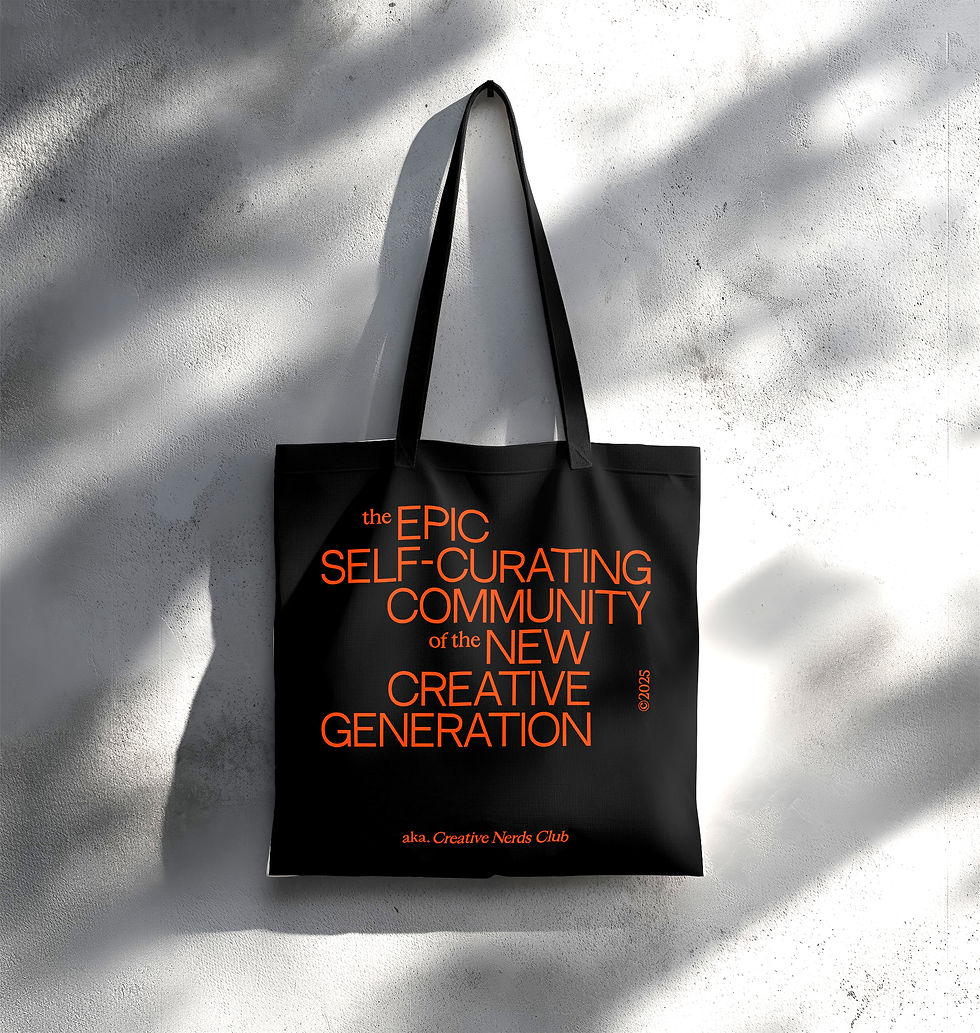DIALOGUE: Rasmus Nossbring | Glass Artist
- Onur Çoban

- Jul 9, 2023
- 4 min read

We talked about his work and production practice with Rasmus Nossbring, a multidisciplinary designer whose works show playful colors, figurative characters, and architectonic influences in unexpected complexities.
Who is Rasmus Nossbring? Can you briefly tell us about yourself?

I am an artist/sculptor based in Stockholm, Sweden with glass as my primary medium. I was traditionally trained in one of the Swedish glass factories before I decided to study art, and is now running STHLM Glas studio with my friend Simon Klenell, in an old ceramic factory outside of Stockholm. My work is usually somewhat figurative and colorful, often with a humoristic twist.
Your figurative works, inspired by ordinary discoveries in everyday life, have a characteristic visual language. How was the emergence of this visual language? Can you tell us about your journey of becoming a glass artist?
As I said before, I was traditionally trained in a glass factory a few hours south of the capital. I started as an apprentice when I was just about to turn 16, and I had never seen anything that caught my attention such as glass before. It soon turned out it takes a long time to master, and I worked in the factory's production for 8 years before I needed more time and space to focus on my artistic voice. I realised how much I enjoyed sculpting glass, and my goal during art school was to figure out a way to use it to tell my own stories, with an attitude that nothing is impossible, you just need to find the proper way to do it.
The forms and techniques used in glass art are usually based on the artist's imagination and sources of inspiration. What is your source of inspiration in glass art, and what kind of direction do you think this source gives to your art? Can you tell us a little about the story of the forms you use in your works?
Well, I've always been interested in the mundane. Or rather, what beautiful poetry that takes place in everyday life without reflection. I try to capture those in sculpture, tell mine and others stories, in a surrealistic/contemporary setting that could have multiple interpretations. I've always been fascinated by extremely technical glassmakers, such as Martin Janecky or Karen Willenbrink, but I think recently I'm a bit more all over the place when it comes to inspiration. Some favourites that has stuck with me for a while is the sculptor Natalie Djurberg, Basquiat, Schiele and Sottsass.
How do you deal with the limiting nature of the glass material? What approach do you adopt to achieve a balance between aesthetics and technique in glass art?
I've battled this for years, and I think of it differently if I look at it as an artist or a glassmaker. Everything is possible as long as you have a good team to work with, since glass is always teamwork. Also I've come to terms with that I prefer when things are not perfectly symmetric and proper, you miss out on a lot of gesture and balance in the work if it's you do not listen to what it wants to do and just force it. Most of the things I make is fairly complicated, but the work is more important than the technique, technique is both the foundation and a chain.
Can you tell us a bit about your production process? Which of the analog and digital techniques are you closer to?
I'm afraid I am very analog. I make almost everything by hand even though I've recently worked with old press molds from the factory I was trained and that's about as digital as i get. Although, I always rework them or combine them with handsculpted components, so the mark of my hand is present. For some reason, I often want to have dealt with the whole surface of a sculpture with my hands (tools of course, since the glass i ridiculously hot).
Which of your works to date has excited you the most?
This really fluctuates, day by day.. But I feel very good about the most recent body of work that is to be on display for the first time in mid August at Galleri Glas in Stockholm. In this series I've incorporated "found objects" that was made by my previous maestros at the glass factory, as well as components with a lot of imaginare, combined with over the top form and color.. It's quite maxed out. Also the sculptures currently on display in the exhibition Generation Glas at CF Hill.

Who are the names you follow with curiosity in this field or different disciplines?
Recently I've been quite obsessed with a glass artist called Baku Takahashi. He makes incredible graphical work in glass that I just adore. It's also always fun to follow Megan Steljes development with glass and neon.
Are you excited about the future, and what are your plans?
Always, yes! My solo show Lost & Found is coming up at Galleri Glas, opening 17th of August that is currently getting finished up. I feel like it is a new step up for the work, and I am looking forward to continue working with it for some upcoming events around Europe.














































